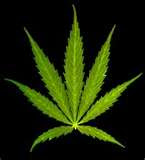
The Great Wall of China was started over 2000 years ago. By the time that it was complete, it covered a total of 4600 miles, and it has the distinction of being the only man-made object visible from space.
For more than 150 years, the United States has wrestled with how to deal with illegal immigrants from Mexico. The most blatant example of xenophobia occurred in 1954, when “Operation Wetback” was created by the United States government:
Ultimately, as many as 700,000 Mexicans were forced back to their homeland by our government. Although the operation was deemed to be a success, it did little to stem the flow of illegal immigrants, due to the fact that the standard of living in America, even at minimum wage, is better than life in Mexico.
On October 26, 2006, President George Bush signed the “Secure Fence Act”, which authorized the building of a 700 mile long barrier fence between the United States and Mexico, a country that is considered to be one of our allies.
As of March of 2010, slightly in excess of $1 billion has been spent on the fence, which has done little to stem the flow of illegal immigrants. Before we spend any more money on this white elephant, I’d recommend that we should have a few conversations with a man who is not widely known in America, but is very familiar to folks who live “south of the border”.
Carlos Slim recently became the world’s richest man. With a net worth of $53.5 billion, he is worth more than Bill Gates, chairman of Microsoft, and Warren Buffet, chairman of Berkshire Hathaway -
and he lives in Mexico City.
Mr. Slim is the first non-American since 1994 to head the Forbes list of the richest people on the planet, and he is the first person from a developing nation to achieve that honor.
The reason that we need to pay more attention to Mexico’s telecom king is that his success is a clue to one of the two REAL ways that we can finally stop the flow of illegal immigrants into America from Mexico.
Rather than spending over one billion dollars trying to keep impoverished Mexicans from sneaking into our country in order to get a chance at a better life, our money would have done far more good if we had invested in Mexican industry so that living conditions south of the border would improve. To borrow an old quote, “a rising tide lifts all boats”.
Although right wing extremists feared that NAFTA would destroy our economy, the net result 16 years later is that the economies of all three participating countries have benefited from the agreement, even though Mexico (surprisingly) benefited the least.
The second step that should be taken is the legalization of marijuana.

In the early 1980’s, the wholesale price of a pound of marijuana grown in Mexico ranged from $350 to $1600, and marijuana grown in Columbia, Jamaica, and Thailand was much higher than that. It is estimated that Americans spent approximately $9 billion on marijuana in 1990, and it was fairly easy to obtain in most cities in this country.
The United States has the highest incarceration rate of any country in the world. Our country has less than 5% of the world's population, but it has 23.4% of the world's prison population.
As of 2008, there were 2.4 million people behind bars, and approximately 1,000,000 of those arrests were for non-violent crime, such as marijuana possession. It is estimated that our individual states spend between $18,000 and $31,000 a year for each prisoner. If you multiply those numbers by the number of people incarcerated, our prison system costs our country between $43 and $78 BILLION a year.
The deficit projections for all 50 states for fiscal year 2010 are $38 billion, a number that is expected to grow to $103 billion in 2011. California has the distinction of having the highest deficit, at $6.6 billion, but Illinois is in second place, at $5 billion.
If marijuana were legalized, and made available through state-owned stores (which is how alcohol is sold in Canada) we could dramatically reduce the number of people in our prisons, greatly reduce state deficits, greatly reduce the amount of illegal drugs coming in to this country, and have mellower citizens.

Realistically, I don’t envision either one of the solutions that I’ve proposed above being taken seriously by our elected officials, but they make too much sense to be ignored.
If narrow-minded people like Sarah Palin can give credibility to an organization known as the Tea Party, why can’t a brave and forward thinking politician somewhere start a “pot party”?
It sure is fun to think about, isn’t it?
sure is! You should research why marijuana ever became illegal and why it is listed as a class 1 (or A, forget how they rate "drugs" and plants)narcotic, I'd like to know. Another interesting thing to research is why alcohol is excepted while "weed" is demonized. I also wonder about the reason why prohibition was ended, wasn't it to stop the illegal trade of it? Criminals were making to much money? If that's the case, I don't understand why marijuana prohibition is ongoing. It does seem though that if it were legalized, the criminal justice system would run out of things to do and then where would they get their funding?
ReplyDeleteThe first regulation of marijuana occurred in 1906.
ReplyDeleteFor more information, refer to the link below:
http://en.wikipedia.org/wiki/Legal_history_of_cannabis_in_the_United_States